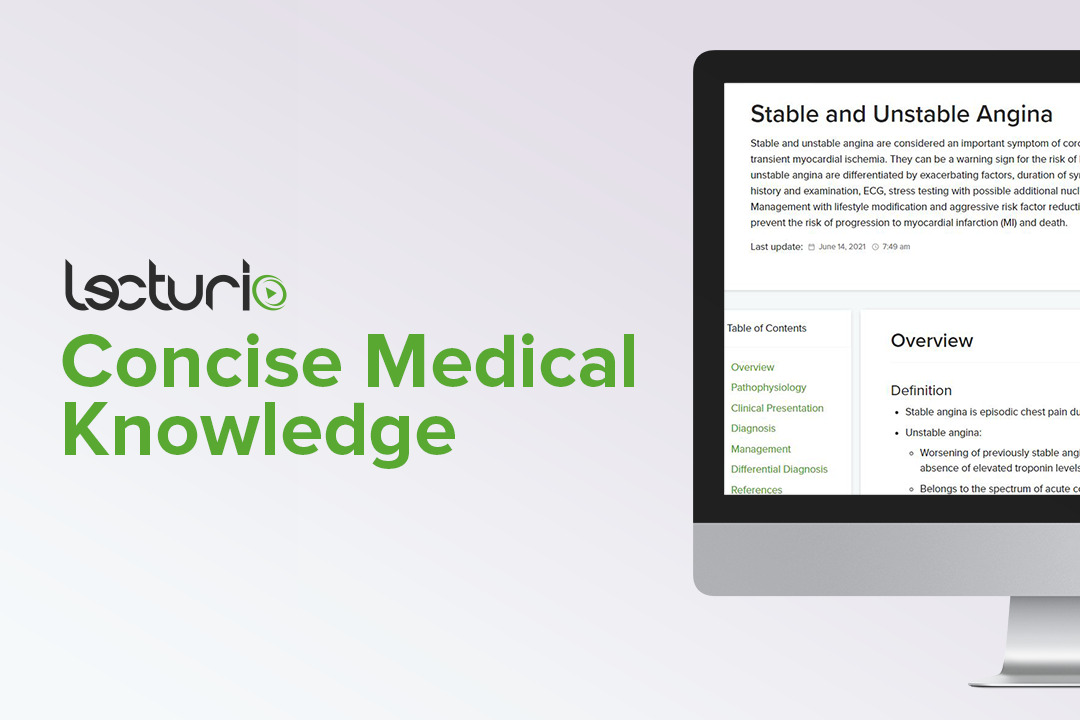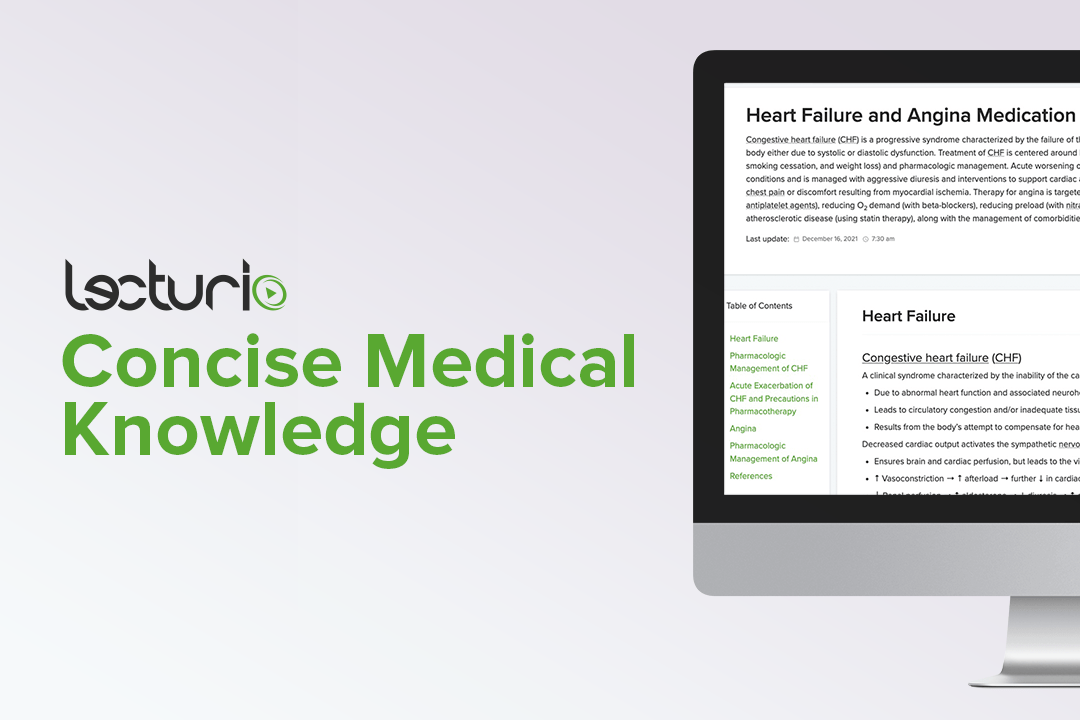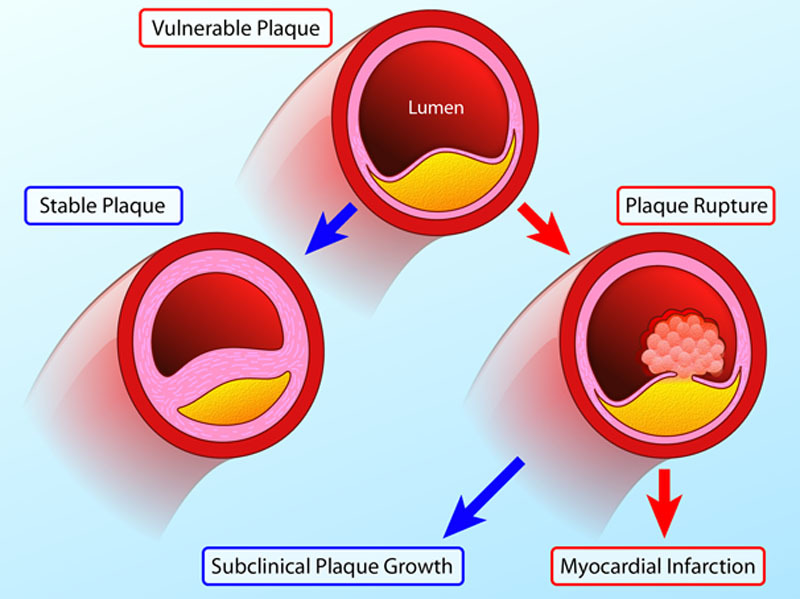Playlist
Show Playlist
Hide Playlist
Management of Angina and Myocardial Infarction: Treatment and Complications after (N)STEMI
-
Slides ManagementAngina MyocardialInfarction CardiovascularPathology.pdf
-
Download Lecture Overview
00:01 Now, management continues. All patients with AMI should undergo intensive treatment for modifiable risk factors. What were they again? Aspirin, ACE, beta-blockers, secondary prevention. So you want to continue taking baby aspirin, ACE inhibitors always a good thing, beta-blockers all these are then for secondary prevention. Treatment of hyperlipidemia, statins. I had another drug in there for you that is very relevant. That's your, once again proprotein convertase subtilisin kexin 9 inhibitor, and those of some of your monoclonal antibodies, we have referred to that earlier known as alirocumab or your evolocumab, locumab is their suffix you pay attention to please. diabetic control, smoking, and diet and exercise. If you are able to do this and if you are able to educate your patient properly where you are exercising prevention is not the best medicine. Mechanical complications that we are worried about. Weakened infarcted cardiac tissue. Remember the timeline that we walked through with myocardial infarction and at some point with that scar formation, it might become weak and may result in a ventricle aneurysm or rupture. Oh my goodness we have either septal or wall rupture may result in papillary muscle might have a new type of murmur that has been introduced. A mitral valve regurg or if you had a septal rupture, it kind behaves like a VSD. What kind of murmurs are these please? Close your eyes. You got theses. Systolic murmurs that are being introduced newly. If it is a wall rupture, you're worried about death from what? Sudden accumulation of blood within your pericardial cavity and say that you have tachycardia and have hypertension, you have what is known as kussmaul sign mean to say positive JVD and you have muffled heart sounds. Worried about pericardial tamponade, don't you? What is your next step in management? My goodness gracious get in there, do a pericardiocentesis and get that fluid out. Mechanical complications require emergency type of surgical issues. Papillary muscle rupture can present with acute hypotension, acute pulmonary edema. Understand that everything is being backed up. Here is our mitral valve. 02:21 Are you with me? And you have regurg back into where? Left atrium. Back into where? Pulmonary veins. 02:31 Pulmonary edema acutely, new systolic murmur. Chronically what kind of issues are you worried about? Conduction system big time and if that is the case my goodness gracious you plant a pacemaker, arrhythmias due to scar formation. That's what we'd talk about over and over again and major complication that you are worried about resulting in sudden death is the fact that you are messing up the conduction chronically. Mechanical failure, your left systole or should I say your left ventricle is dying. So, therefore, the systolic function on the left side is also not working. And so therefore, now I want you to pay attention to this statement, there is a lot of clinical importance for this particular stanza. When I walk you through this, if your heart dies on the left side and that is which you focus upon here, please. 03:24 If the heart dies on the left side, it cannot pump forward. What is the active process of your heart phase? Systolic. What kind of dysfunction would you call this if the left ventricle is not functioning properly? A systole dysfunction, stop there. If I can pump my blood forward into the aorta, where is all my blood? In the left ventricle. It is stuck in the left ventricle. 03:50 How are you going to measure this? On the left side, a central venous pressure or you are going to use a PCWP, a pulmonary capillary wedge pressure. You are correctly telling me PCWP, pulmonary capillary wedge pressure. Where is my blood? In the left ventricle. Why? It is not moving forward. Are you seeing this? Close your eyes and conceptualize, the only way that you get all the questions right. There is my blood lying in my left ventricle, increased preload and your PCWP is increased, correct? Yes. Now the mitral valve wants to open, the blood wants to rush into the left ventricle. But the problem is there is blood still remaining there residually from the previous systolic dysfunction. So could that systolic dysfunction then give rise to a diastolic dysfunction? Yes, it can. What does that mean to you? Pay attention here. What kind of heart sounds are you going to find here? If it is a systolic dysfunction, what does that mean? The blood is not moving forward. So, therefore, my left ventricle could be rather large and it could result in what kind of heart sound? An S3. We talked about that earlier, an S3 gallop, what is happening? It is the fact that because of the systolic dysfunction, you have a large left ventricle, as soon as a mitral valve opens, it create an S3, stop there. Well what if the blood starts accumulating in your left ventricle? Right. So now that's a diastolic dysfunction because you cannot properly fill up the left ventricle and that blood now that is rushing from your left atrium, are you seeing this? That blood that is rushing from the left atrium through the mitral valve, into the left ventrical, hitting the blood in your left ventricle, is going to create a what? A fourth heart sound. What does a fourth heart sound mean to you? You have heard of this as being hitting a stiff left ventricle. But with all that blood in there, it might as well be stiff. If you haven’t understood that, please make sure that you go back and review what I just told you with that particular statement. Do you understand how much clinical relevance there is with each one of these statements? Some more than others, especially when it comes to pathology. Continue. Insufficient or significant damage myocardium, it cannot do what? It cannot maintain the proper heart function.
About the Lecture
The lecture Management of Angina and Myocardial Infarction: Treatment and Complications after (N)STEMI by Carlo Raj, MD is from the course Ischemic Heart Disease: Basic Principles with Carlo Raj.
Included Quiz Questions
A patient presents with tachycardia and hypotension, and on exam has distended neck veins and muffled heart sounds one week following an acute myocardial infarction. Which of the following is the most appropriate immediate step in the management of this patient?
- Pericardiocentesis
- Morphine
- Rescue percutaneous coronary intervention
- Fibrinolytic therapy
- Intravenous diuretics
What is a possible complication one week after an ST-elevation myocardial infarction that presents with chest pain, restlessness, hypotension, and a new, loud and harsh holosystolic murmur which is loudest at the lower left sternal border?
- Ventricular septal rupture
- Mitral valve regurgitation
- Atrial septal defect
- Mitral valve stenosis
- Aortic valve regurgitation
Customer reviews
4,5 of 5 stars
| 5 Stars |
|
1 |
| 4 Stars |
|
1 |
| 3 Stars |
|
0 |
| 2 Stars |
|
0 |
| 1 Star |
|
0 |
Great overview! I personally loved to picture the concepts and pathophysiology in my mind.
having more pictures when explaining the heart will be better to understand.







